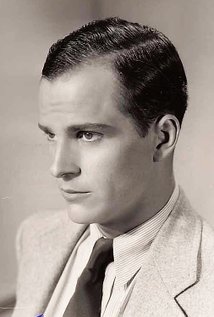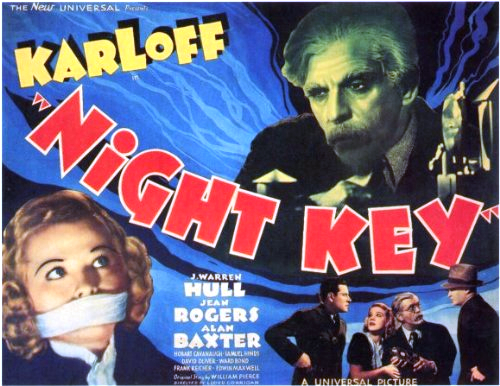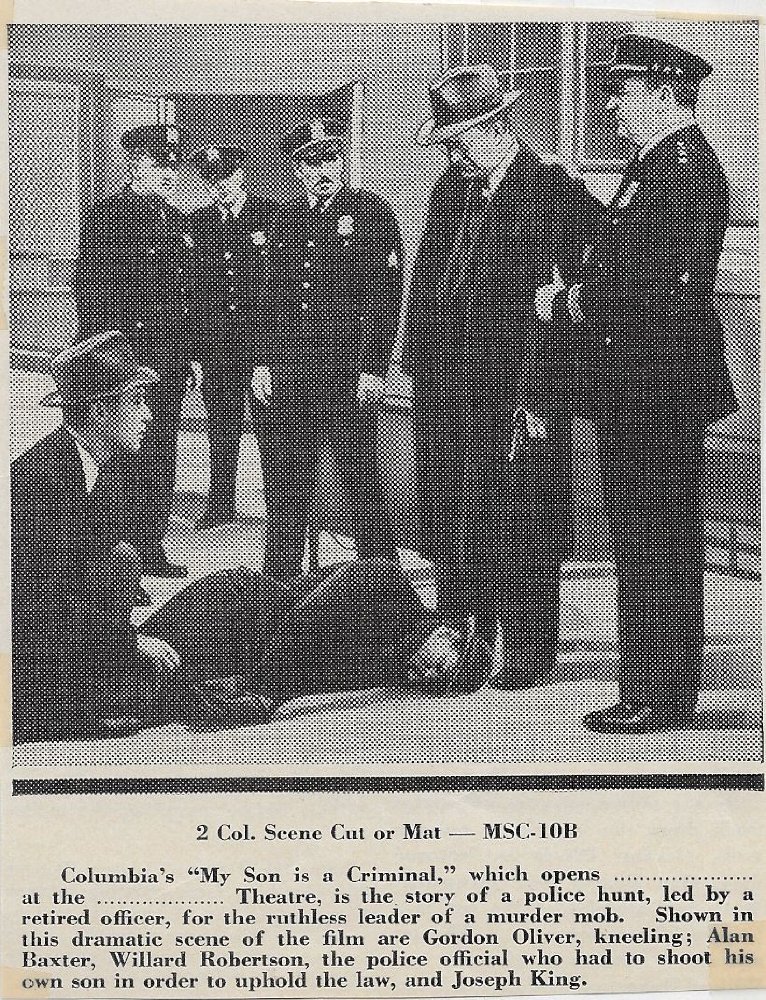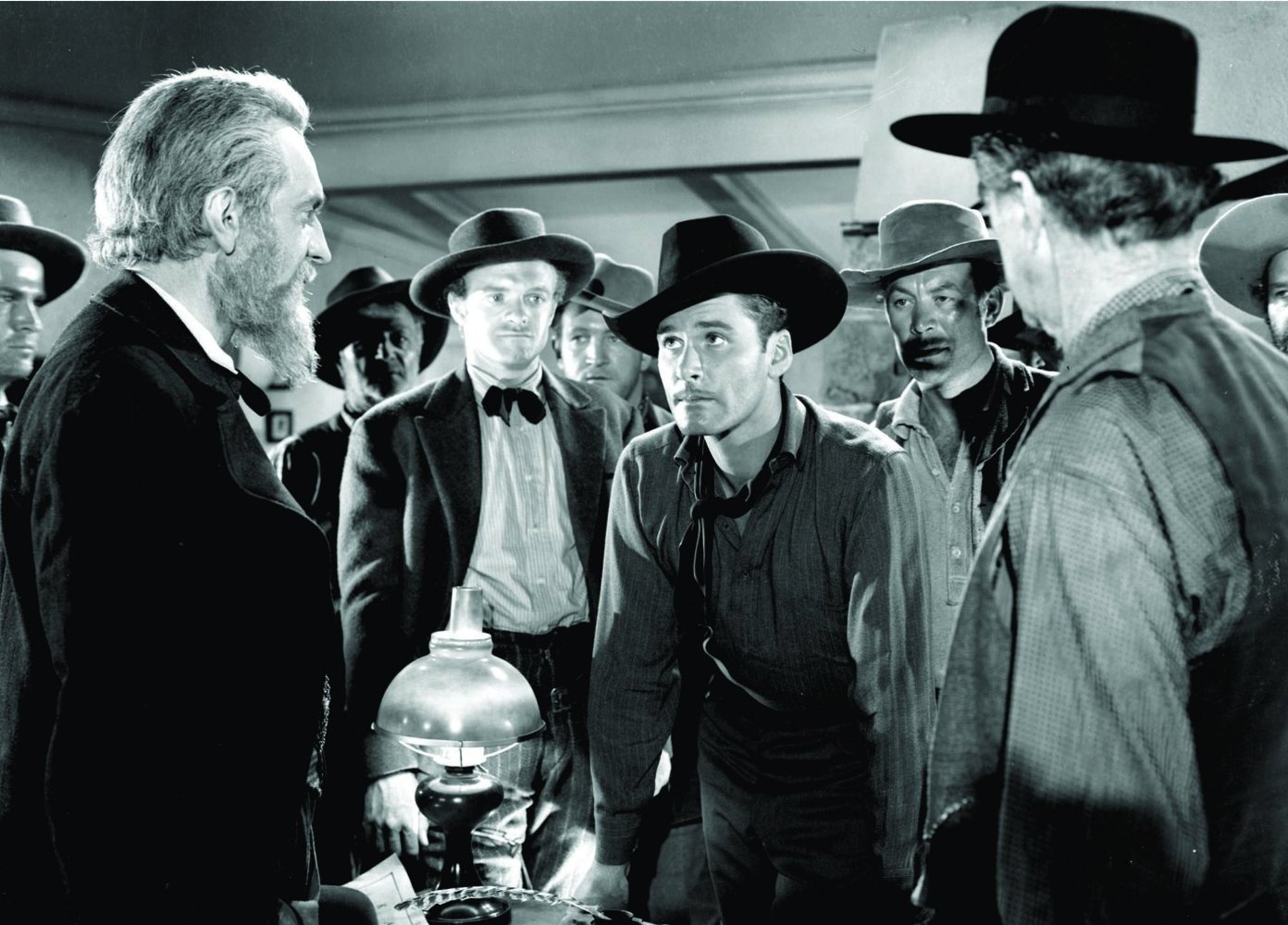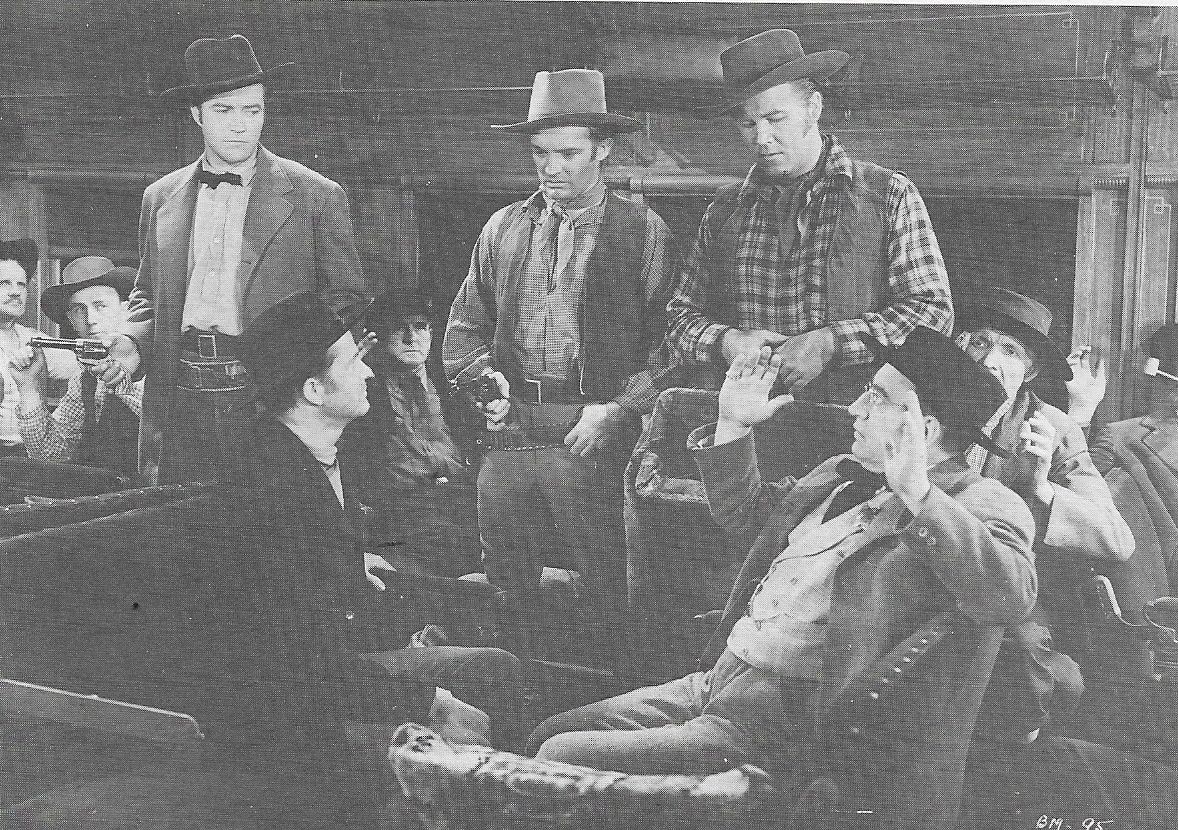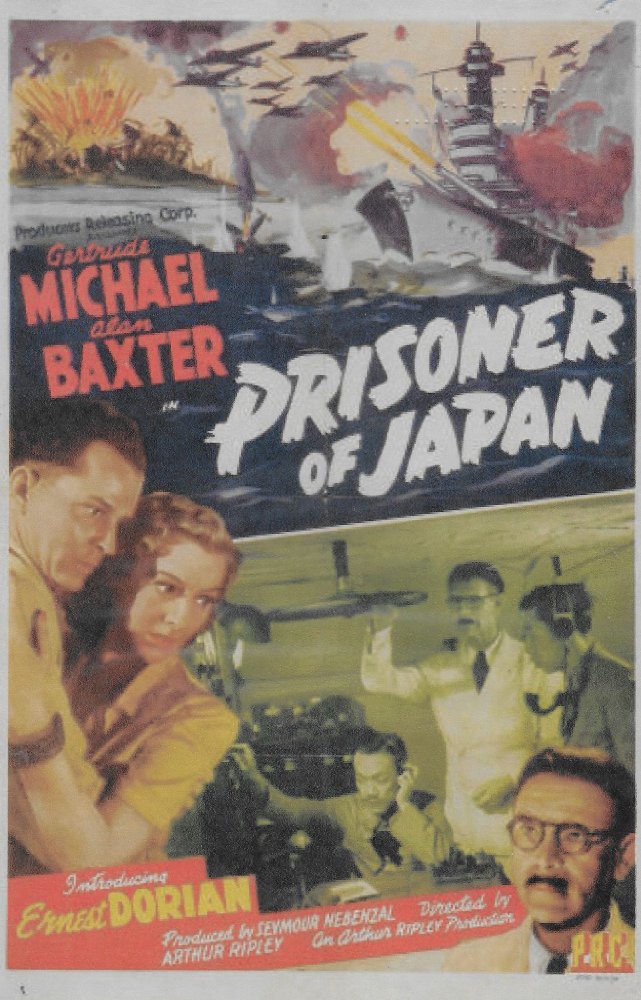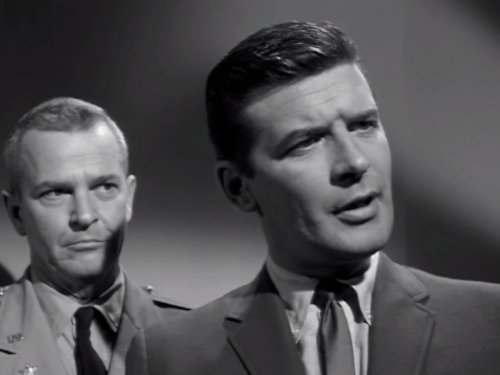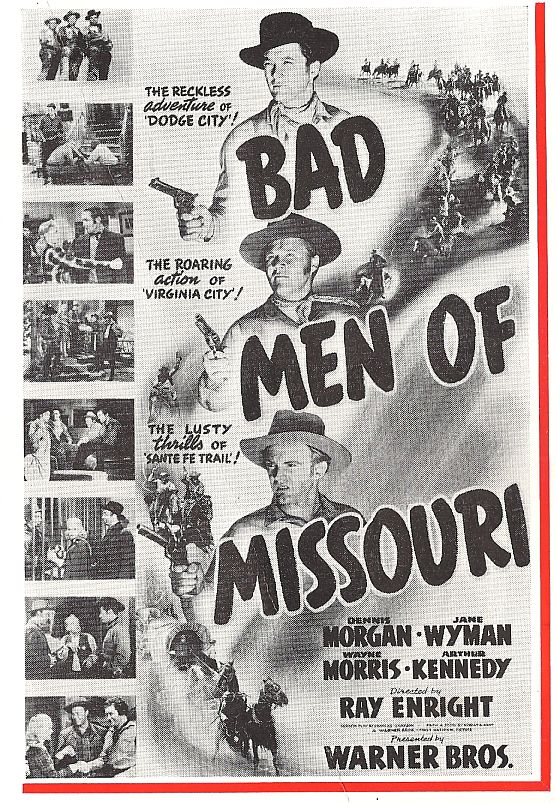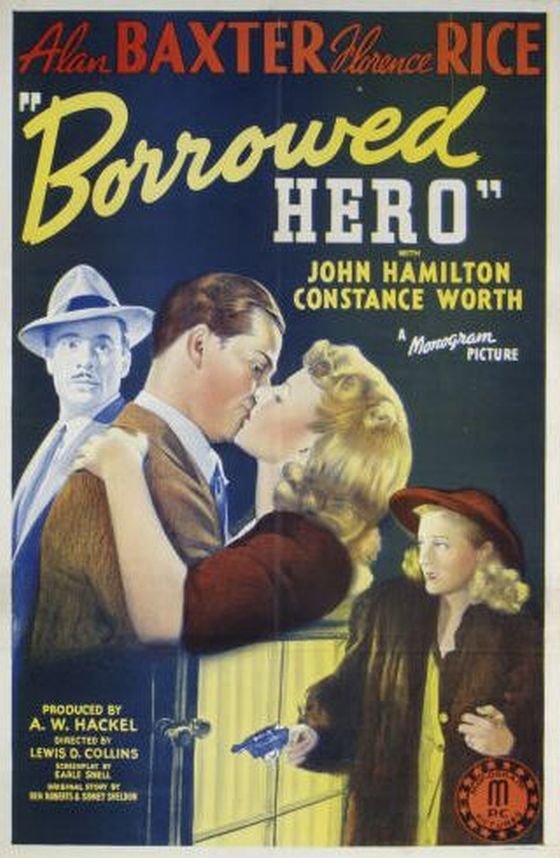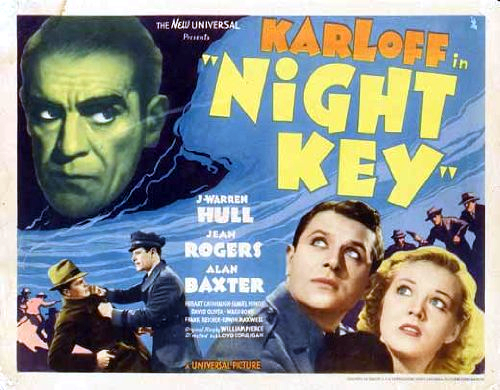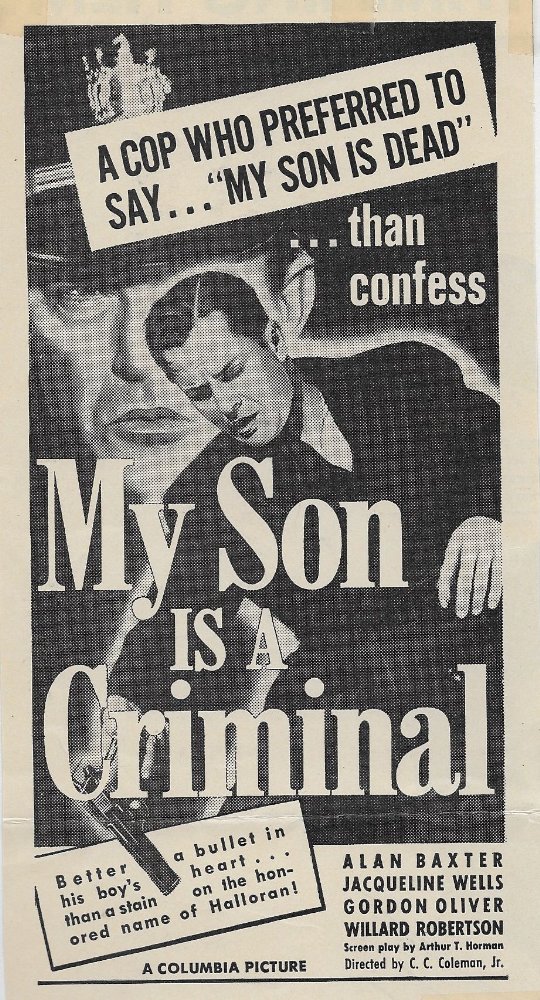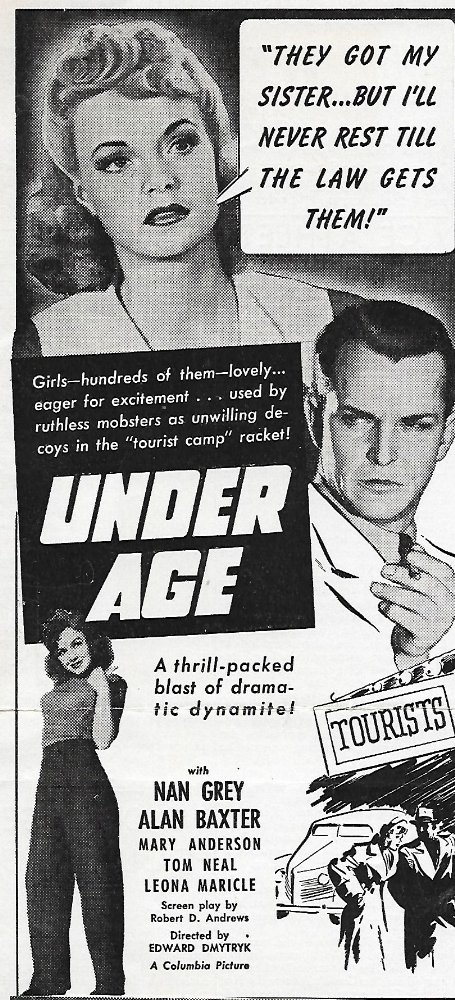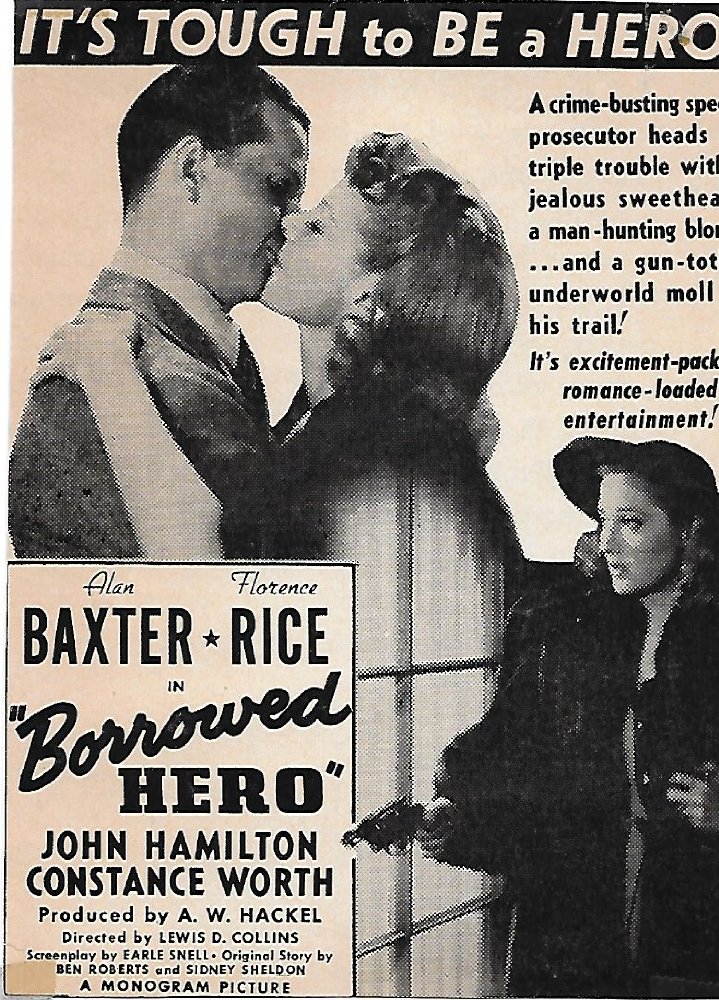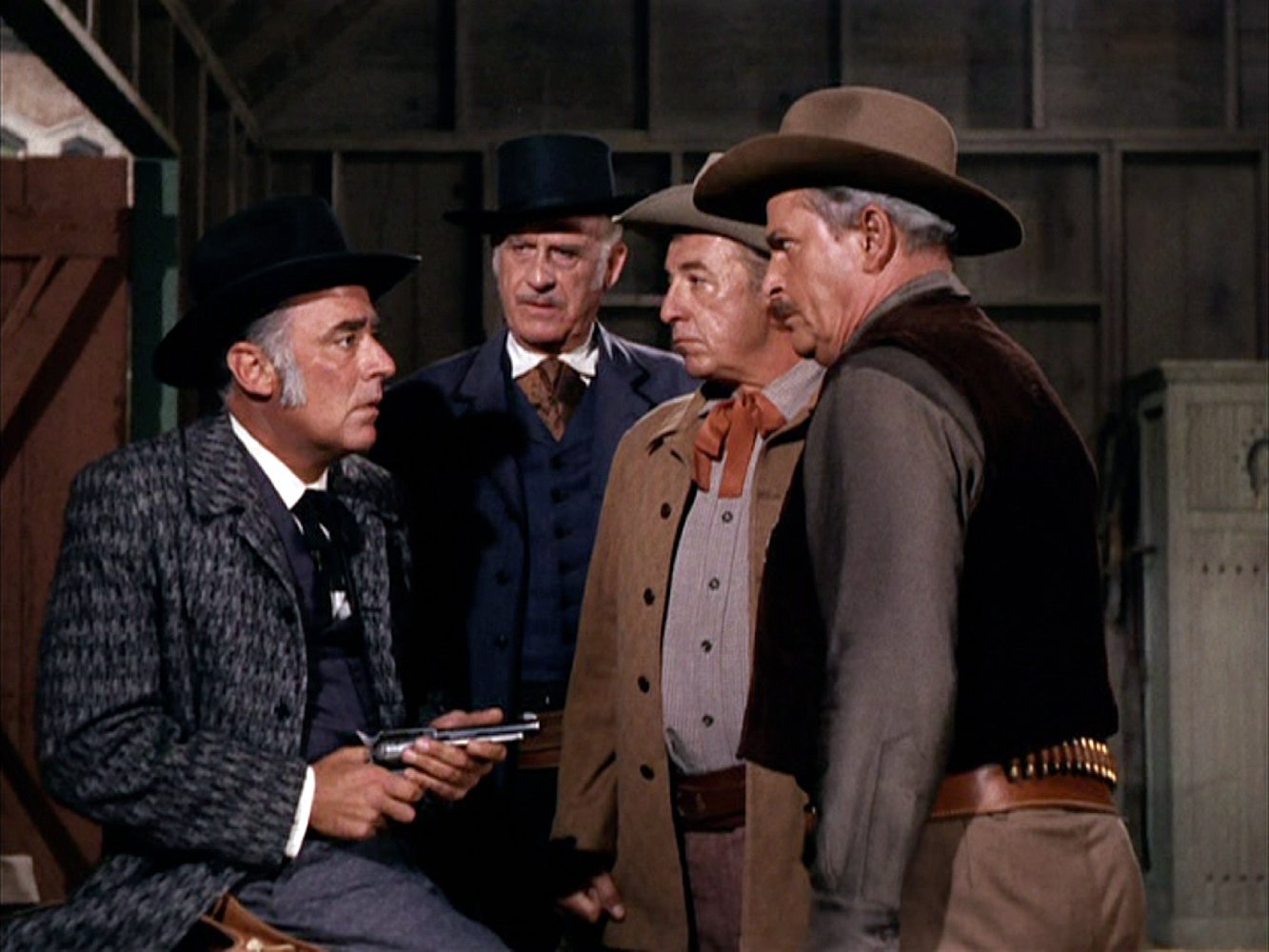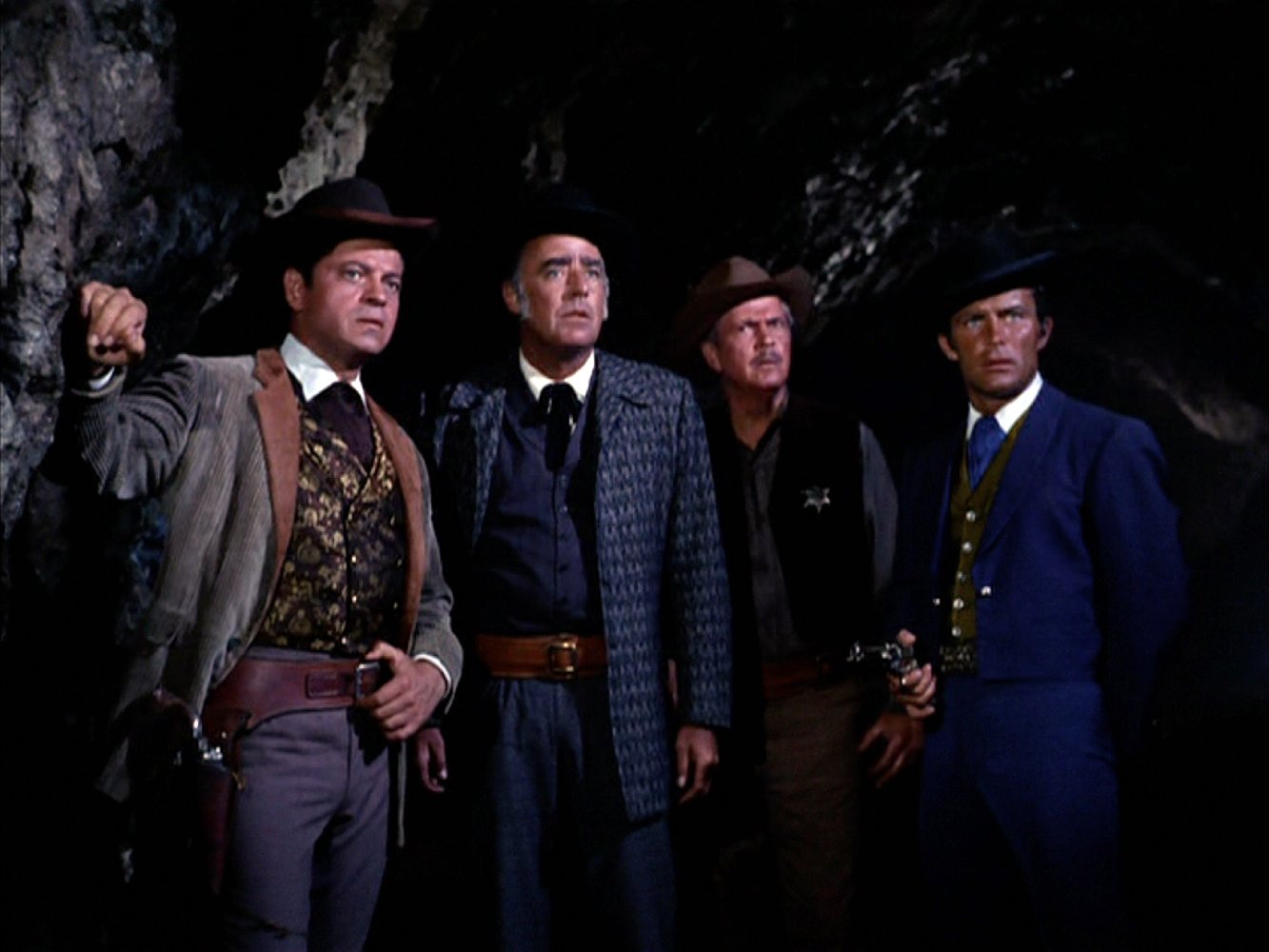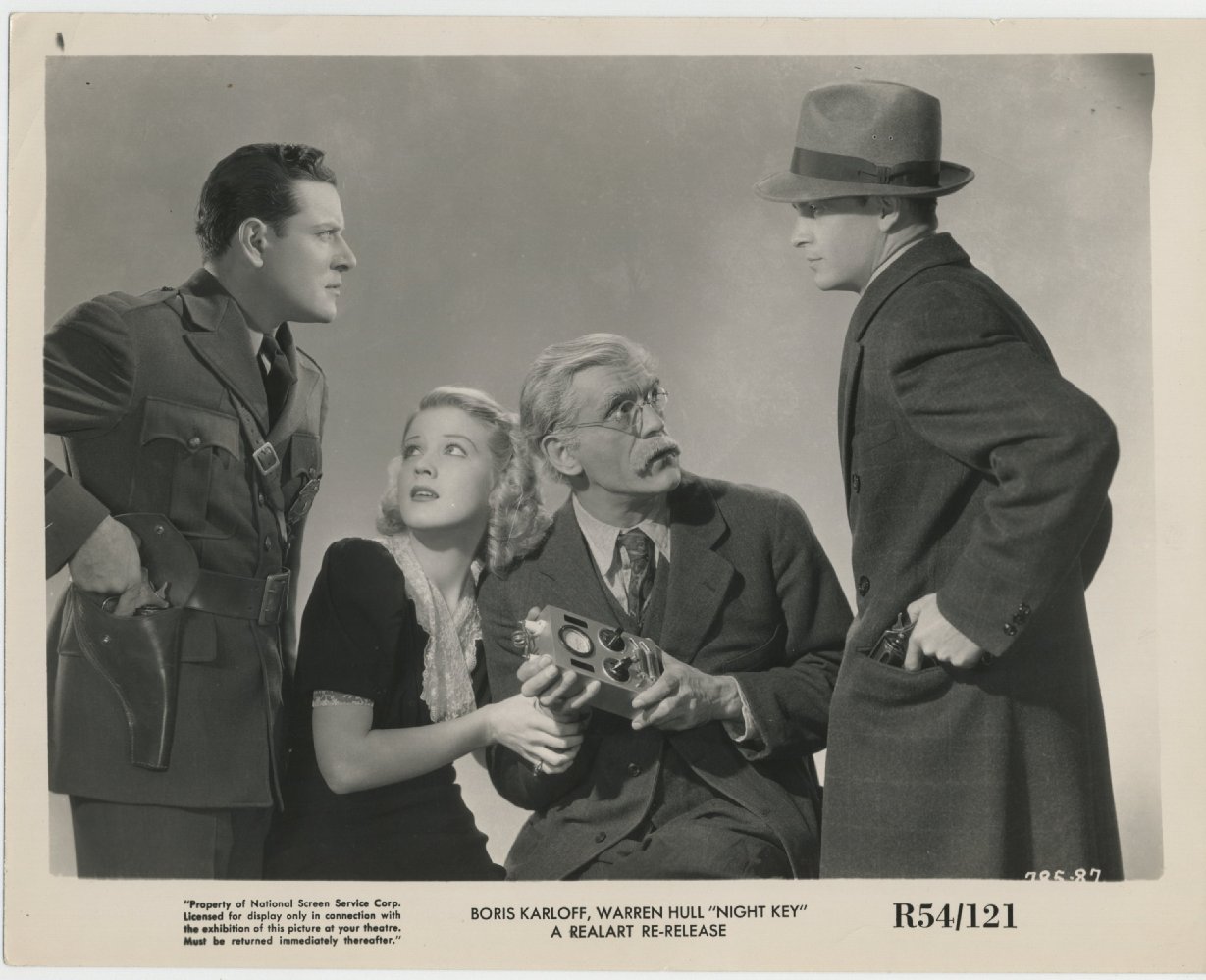Before there was an Alan Ladd, there was another furtive-eyed, baby-faced, cigarette-dangling villain named Alan, impacting the movie scene with his various colorless and cold-hearted thugs, mobsters and killers. Dark-haired, bullet-headed actor Alan Baxter earned a noticeable degree of popularity back in the late 30s and 40s with his various despicables, before his film career lost steam and he sought more and more TV and stage work.The son of a Cleveland Trust Company vice president, the Ohio native was born on November 19, 1908, in East Cleveland. Following high school, he studied drama at Williams College in Williamstown, Massachusetts, where he forged a strong friendship with fellow collegiate and future directing icon, Elia Kazan. Once they graduated in 1930, the pair went on to attend the Yale School of Drama.Alan hooked up with the then-fledgling Group Theatre in the early 1930s and appeared in such stage productions as "Lone Valley", "The Pure in Heart" and "Waiting for Lefty". His performance in "Black Pit" in 1935, however, was witnessed by a Hollywood talent scout and it was enough to change the course of his career. Immediately heading west to Hollywood, Alan made an auspicious debut with his strong performance as "Babe Wilson", the heartless killer loved by Sylvia Sidney's character in Mary Burns, Fugitive (1935). Three years later, Alan went on to recreate the role on radio.With his foot strongly in the Paramount door, he continued playing dangerous, unsavory types in Thirteen Hours by Air (1936), Big Brown Eyes (1936) and The Case Against Mrs. Ames (1936), until his contract ran out. Continuing to freelance throughout the remainder of the 1930s, he remained on the wrong side of the law in Parole! (1936), Breezing Home (1937), Night Key (1937), Wide Open Faces (1938), Off the Record (1939), My Son Is a Criminal (1939), and Each Dawn I Die (1939).A solid "B" lead player who appeared in support when it came to "A" pictures, Baxter occasionally broke out of the "bad guy" mold -- but not often. By this time, Alan Ladd was starting to cut in on Alan B.'s action with his moody and sexy versions of trench-coat-trendy villains. Baxter, nevertheless, continued to roll on, playing outlaw "Jesse James" in Bad Men of Missouri (1941) opposite Dennis Morgan, Wayne Morris and Arthur Kennedy as the Younger brothers, while adding slick malevolence to such films as Escape to Glory (1940) with Constance Bennett, Under Age (1941) with Nan Grey and Mary Anderson, The Pittsburgh Kid (1941) with Jean Parker and Rags to Riches (1941) with Mary Carlisle.This period of filming was topped by an excellent support role in the classic Alfred Hitchcock thriller, Saboteur (1942), in which he, as the meek-voiced, mustachioed, bespectacled, peroxide blond Nazi spy "Freeman", shares a memorable scene with lead Robert Cummings. Following standard work in China Girl (1942) and Behind Prison Walls (1943), Alan, at age 35, signed up for the Army Air Force in 1943, and made an appearance in the Broadway production of Moss Hart's "Winged Victory", which later was turned into the 1944 movie version of the same name, Winged Victory (1944) (also featuring Alan).Post-war filming grew more dismal with a high majority of "Poverty Row" pictures coming his way. His last appearance in a strong film was the Robert Ryan boxing pic, The Set-Up (1949), as a mobster involved in fixing matches. Alan decided to return to the challenge of the stage, appearing in such plays as "Home of the Brave" (1945), "The Voice of the Turtle" (1947), "The Hallams" (1948), "Jenny Kissed Me" (1948), "Tea and Sympathy" (1955) and "South Pacific" (1957) (in a non-singing role). TV also became a positive medium, with adventure guest roles on The Rifleman (1958), Wagon Train (1957), Colt .45 (1957) and Alfred Hitchcock Presents (1955), among the offerings.By the 1960s, he was seen primarily in incidental film roles, his last being the cult rodent thriller, Willard (1971). Diagnosed with cancer, the twice-married actor died a few years later at the Motion Picture Country Home on May 8, 1976.
Show less «

